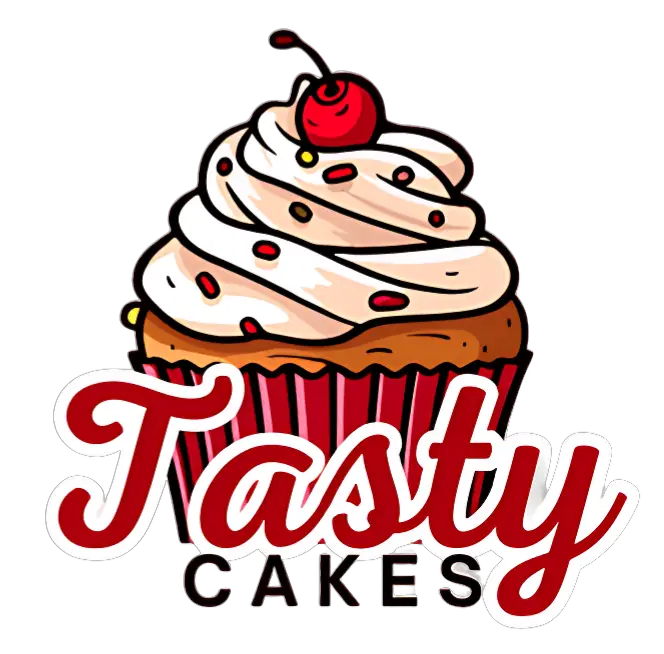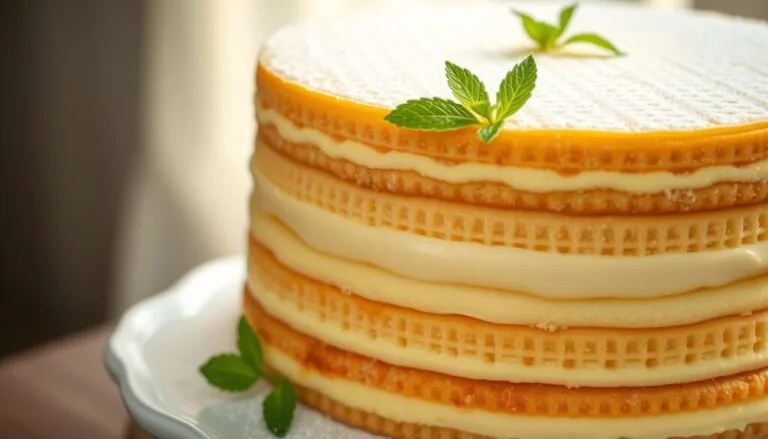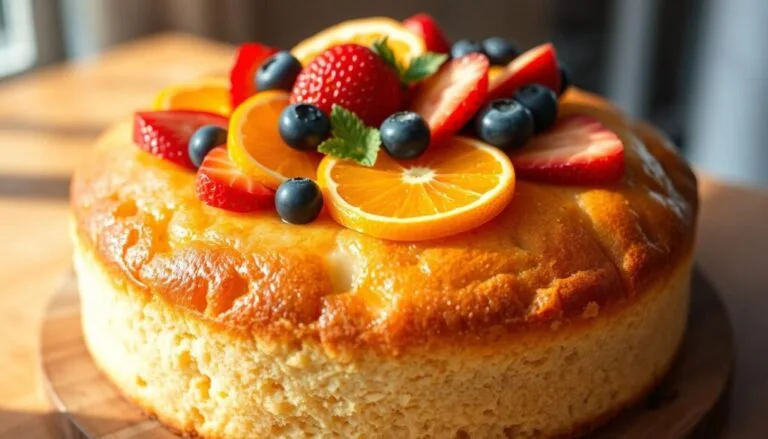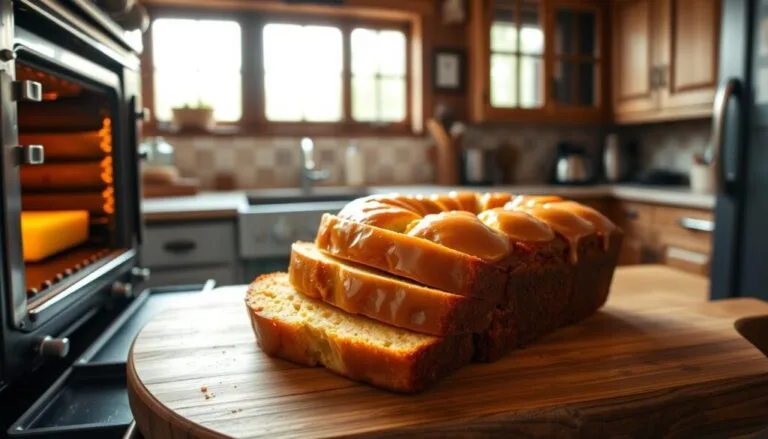Only Tasty Cakes

Moist Eggless Vanilla Cake: Bake a Delightful Treat
Ever stared at a failed eggless cake, wondering why it turned out dry or dense? You’re not alone. Home bakers have long searched for the perfect vanilla cake recipe without eggs. This recipe, based on a 1918 “wacky cake” tradition, finally offers the moisture and tenderness you crave.
Imagine sharing a slice with family, knowing every bite is filled with creamy vanilla flavor—no eggs needed.
Moist eggless vanilla cake on a rustic wooden table, with a soft, delicate texture and a golden-brown crust. The cake is topped with a dusting of powdered sugar, creating a subtle and elegant appearance. The lighting is warm and natural, casting a soft glow on the cake, highlighting its inviting allure. The scene is framed by a simple yet charming background, with hints of greenery or a plain white backdrop to keep the focus on the cake’s mouthwatering details. The camera angle is slightly elevated, providing a clean and appetizing view of the baked treat, ready to be savored.
Table of Contents
Key Takeaways
- Based on a century-old recipe, this eggless vanilla cake balances texture and taste.
- Perfect for 12 slices or 24 cupcakes, it adapts to any celebration size.
- Tested methods ensure a 30- to 40-minute bake time with 325°F precision.
- Uses everyday ingredients like Greek yogurt and all-purpose flour for reliable results.
- Customizable with over 30 frosting options, from lemon zest to chocolate drizzle.
Whether you’re avoiding eggs for dietary needs or preference, this vanilla cake recipe proves eggless baking can be simple and rewarding. With just 10 minutes of prep and 45 total minutes, you’ll master a cake that’s as fluffy as any classic version. Every detail is designed to eliminate guesswork.
Let’s turn frustration into celebration, one golden-brown layer at a time.
Why Choose an Eggless Vanilla Cake
Learn how eggless vanilla cake meets today’s dietary needs. It’s perfect for those who can’t eat eggs due to allergies, ethical reasons, or personal choices. This recipe is a great solution.
Dietary Restrictions and Preferences
About 2% of kids in the U.S. have egg allergies. This makes eggless desserts a must for their safety. Some people follow religious diets that don’t include eggs. Vegans also have a special treat with this cake, without harming animals.
Health Benefits of Eggless Baking
- Lower cholesterol content from egg-free formulas
- Plant-based yogurt or oil adds moisture without saturated fats
- Recipes like this use yogurt’s probiotics for digestive benefits
Environmental Impact Considerations
Egg production needs 4x more water than plant-based ingredients. Choosing eggless options cuts down on water and energy use. This cake uses common ingredients like flour and baking powder, reducing waste.
The Perfect Eggless Vanilla Cake: What Makes It Special
Making the best eggless vanilla cake begins with eggless cake ingredients. These ingredients must balance texture and taste. The cake should be moist but light, with a tender crumb that surprises you by being egg-free.
The secret is in using yogurt or buttermilk. They add moisture, just like eggs do. Baking powder and vinegar help the cake rise, making it fluffy.
Key ingredients work together to create a cake that feels like the real thing. All-purpose flour gives it structure. Sugar enhances browning and taste. Vanilla extract adds warmth.
Here’s how they help:
- Leavening agents like baking powder and vinegar create lift without eggs.
- Moisture-rich liquids (milk, yogurt) keep the crumb soft.
- Flavor balance comes from precise sugar and vanilla measurements.
This recipe is versatile. You can use plant-based milk or gluten-free flour to make it your own. The best eggless vanilla cake is perfect for frostings, fruits, or spices. It shows that egg-free baking can be just as delicious.
Essential Ingredients for Your Eggless Vanilla Cake
Choosing the right eggless cake ingredients is key for a great vanilla cake. Start with flour as your base. You can pick all-purpose, cake, or pastry flour. Each type changes the cake’s texture.
All-purpose flour gives the cake structure. Cake flour makes it softer because it has less protein. Pastry flour balances tenderness and firmness for even baking.
Flour Options and Their Effects
- All-purpose flour: 1½ cups provide stability and structure.
- Cake flour: Lower protein content (8-10%) creates softer crumb.
- Pastry flour: Balances tenderness and firmness for even baking.
Sweeteners and Flavor Enhancers
Sugar adds to the cake’s browning and keeps it moist. Use ¾ cup of granulated or caster sugar for a finer texture. Add 1½ tsp of vanilla extract for a rich flavor. Choose pure extract for the best taste.
Leavening Agents for Proper Rise
Baking powder (1¼ tsp) and baking soda (½ tsp) are crucial. They react with acids like yogurt or vinegar. This reaction creates air pockets, making the cake rise without eggs. Always check the expiration dates for reliable rising.
Liquid Components for Moisture
Half a cup of oil (like vegetable or canola) adds richness. Use ½ cup of milk or dairy-free alternatives (almond/oat milk) to balance the liquid. Brushing the top with reserved milk after baking keeps the cake tender.
Best Egg Substitutes for Baking Vanilla Cake
Learning about egg substitutes for baking is key to a great eggless vanilla cake. These options help your cake rise and stay moist.https://www.youtube.com/embed/ItBm-DgGIlk
Yogurt and Buttermilk Options
Yogurt or buttermilk can make your cake tender. Use ¼ cup of full-fat yogurt or buttermilk for each egg. This keeps your cake from getting dry.
Adding ½ tsp baking soda helps the cake rise. If you’re vegan, try soy or coconut yogurt for eggless baking.
- ¼ cup unsweetened yogurt = 1 egg
- Buttermilk adds tang; reduce other liquids if using
Fruit-Based Substitutes
Fruits add sweetness but affect texture differently:
- Applesauce: It’s great for chocolate cakes. Use unsweetened applesauce.
- Banana: ½ medium banana (¼ cup) adds moisture. It’s best in spice or chocolate cakes.
- Flaxseed: Mix 1 tbsp ground flax with 3 tbsp water. Let it sit for 5 minutes. It can make cakes gummy.
Try small batches first to avoid problems like sinking or dryness.
Commercial Egg Replacers
Brands like Bob’s Red Mill need some tweaking. In tests, adding vinegar helped. New options like Just Egg or Ener-G work better with baking soda. Use 2 tbsp replacer powder + 4 tbsp water for each egg.
- Pair with 1 tbsp vinegar to boost leavening
- Check labels for baking ratios on newer products
After trying 8 recipes, the best mix included vinegar and baking soda with yogurt. Always adjust liquid levels when substituting.
Step-by-Step Eggless Vanilla Cake Recipe
This easy eggless cake recipe has a tender crumb and is simple to make. It’s great for vegans or those with allergies. It makes 12 servings and takes about 1 hour and 7 minutes to prepare.
- Ingredients: 2.5 cups all-purpose flour, 150g castor sugar, 3g baking soda, 4g baking powder, 0.25tsp salt, 114g melted butter, 60ml sunflower oil, 360ml milk, 2tsp vinegar, 5ml vanilla extract, 180g yogurt (or sour cream).
- Mix dry ingredients in a bowl: whisk flour, sugar, baking soda, baking powder, and salt until combined.
- Combine wet ingredients in another bowl: melt butter, add oil, milk, vinegar, vanilla, and yogurt.
- Blend wet into dry gradually. Stop mixing once combined—overmixing creates dense layers.
- Pour batter into greased 8-inch pans. Bake at 180°C (350°F) for 27-35 minutes. Test with a toothpick—clean means done.
Optional: Stir in 63g crushed walnuts for texture. Let cool 10 minutes in pans before frosting. Total carbs per slice: 45g, 325 kcal. Store airtight for 3 days or freeze up to 1 month.
Baking Tips for a Moist and Fluffy Texture
Getting the best eggless vanilla cake right takes skill. Follow these steps for a soft and moist eggless vanilla cake texture.
A cozy kitchen counter with a freshly baked eggless vanilla cake in the foreground, steam gently rising from the moist, golden-brown surface. Beside it, an open recipe book, a dusting of flour, and baking tools like a whisk and spatula. Warm lighting from above casts a soft glow, highlighting the fluffy, inviting texture of the cake. The background features a tidy, well-stocked pantry, hinting at the care and attention put into this delightful treat. The scene exudes a homely, comforting atmosphere, inviting the viewer to imagine the satisfying aroma and flavor of this moist, indulgent eggless vanilla cake.
Proper Mixing Techniques
Don’t overmix the batter to avoid a tough cake. Mix wet ingredients until they’re smooth. Then, gently add dry ingredients until they’re just combined.
Stop mixing when you can’t see any flour streaks. Use a spatula for the final mix to keep the cake light.
- Whisk oil and sugar until pale, then add vanilla extract.
- Add dry ingredients in two additions to avoid overworking the batter.
Temperature Considerations
Preheat your oven to 350°F (180°C). Place the rack in the center. Use room-temperature ingredients for better mixing.
Cold butter or eggs can make the batter lumpy. Keep the oven door closed until the last few minutes. Sudden changes in temperature can ruin the cake.
Testing for Doneness
Check the cake by inserting a toothpick into its center. It should come out with a few moist crumbs. The edges should also pull away from the pan.
For exactness, check the internal temperature. It should be between 200–210°F. Start checking 5 minutes before the recipe says to.
A cake’s surface springing back when lightly pressed indicates doneness.
Frosting and Decoration Ideas
Make your vanilla cake recipe even better with frostings that show off its sweetness. For eggless desserts, creamy buttercream or a light fruit glaze work great. Each topping should enhance the cake’s taste without overpowering it.
- American Buttercream: Mix 80ml cocoa, 80ml softened butter, 500ml powdered sugar, and 1.5 tsp vanilla. Add hot water to adjust consistency.
- Whipped Cream Frosting: Stabilize with gelatin for a silky layer that pairs well with fresh berries or sliced mango.
- Caramel Drizzle: Simmer ½ cup sugar with 3 tbsp butter and ¼ cup cream for a glossy topping.
Decorate with seasonal fruits like strawberries or kiwi slices. Edible gold leaf adds elegance, while sprinkles add fun. Here’s how to decorate:
- Let frosting sit 10 minutes before spreading for smoother application.
- Use a palette knife for sharp edges or an offset spatula for soft swirls.
- Add texture by dragging a fork diagonally across the surface.
| Frosting Type | Key Ingredients | Best For |
|---|---|---|
| Buttercream | Butter, powdered sugar, vanilla | Classic layers or piping intricate designs |
| Whipped Cream | Cream, sugar, gelatin | Summer-themed or fruit-based toppings |
| Ganache | Heavy cream, chocolate | Rich chocolate accents on vanilla layers |
Try adding natural food coloring to frosting for different colors. Use tropical fruits with a coconut flake border for a tropical look. Always let the cake cool before decorating to avoid frosting melting.
Troubleshooting Common Issues With Eggless Cakes
Even with the best eggless vanilla cake recipe, unexpected issues can arise. Here’s how to diagnose and fix common problems to achieve the perfect result.
A neatly organized kitchen counter, bathed in soft, natural lighting from large windows. Atop the counter, an assortment of baking tools and ingredients: a mixing bowl, a sifter, a whisk, and various dry components like flour, baking soda, and sugar. In the foreground, a few slices of a moist, golden-brown eggless cake sit on a plate, alongside a cup of freshly brewed tea. The scene conveys a sense of calm, focused troubleshooting, with the cake slices hinting at the successful result of overcoming common eggless baking challenges.
Fixing a Dense or Dry Cake
Density often stems from overmixing or incorrect ingredient ratios. Overmixing strengthens gluten, making the cake tough. To fix this:
- Use a kitchen scale for precise measurements.
- Rest the batter 10–15 minutes before baking to relax gluten.
- Ensure leavening agents like baking powder are fresh—old ones weaken rise.
Addressing Sinking Centers
A sunken center usually happens when the cake rises too quickly then collapses. Avoid these mistakes:
- Do not open the oven door during the first 20 minutes of baking.
- Reduce leavening agents if overused—they cause rapid rise and collapse.
- Check oven temperature with a thermometer; many ovens run hot or cold.
Solutions for Uneven Baking
Uneven layers may arise from hot spots or pan color. Try these fixes:
- Rotate pans halfway through baking to ensure even heat distribution.
- Use light-colored pans—dark metals brown too quickly.
- Spread batter evenly; don’t overfill pans.
Mastering eggless baking takes practice, but these adjustments turn mistakes into mastery. Adjust one variable at a time to pinpoint the issue, and your next attempt will be closer to the best eggless vanilla cake you’ve ever made.
Variations of the Basic Eggless Vanilla Cake
Make your basic recipe into something new. You can add bold flavors or make it healthier. This way, you can turn your vegan vanilla cake into many different eggless desserts.
With 23.8K shares, this recipe has become a hit for its adaptability, proving how eggless baking can meet varied tastes.
Flavor Additions and Mix-ins
Boost flavor without eggs:
- Add ½ cup chocolate chips or dried fruit to batter
- Stir in 1 tsp cinnamon or 2 tbsp orange zest
- Swap vanilla extract with almond or coconut extract
Dietary Adaptations
Make it:
- Gluten-free: Use Bob’s Red Mill 1:1 Gluten-Free Flour (adjust baking time +5 mins)
- Sugar-free: Replace ½ cup sugar with Swerve Confectioners Sugar for a keto-friendly option
- Vegan: Use Silk Soy Milk and coconut oil instead of butter
Portion Variations
| Type | Temp (F) | Time |
|---|---|---|
| Cupcakes (24 count) | 350°F | 18-20 mins |
| Sheet Cake (9×13″) | 325°F | 28-32 mins |
| Bundt Cake | 325°F | 35-40 mins |
Pro tip: For vegan vanilla cake cupcakes, reduce oven temp by 25°F to prevent dryness. Always adjust liquid ratios when altering sizes.
Storage and Shelf Life Guidelines
Keeping your eggless vanilla cake fresh is key. Cool it down completely before you seal it. For a short time, wrap unfrosted cakes in parchment paper. Store them in an airtight container at room temperature for up to 3 days. Make sure they’re away from sunlight and heat.
- Refrigeration: Wrap it tightly in plastic wrap and put it in a container to avoid smells. Keep it in the fridge for up to 5 days. Let it come back to room temperature before you serve it to get back its texture.
- Freezing: Wrap it twice, first in cling film and then in aluminum foil. Freeze for up to 3 months. Remove the frosting before freezing; add it back after it’s thawed at room temperature for 24 hours.
For eggless desserts with special toppings:
- Buttercream-topped cakes last 4-5 days in the fridge.
- Fruit-filled layers need to stay in the fridge and should be eaten within 5 days.
- Don’t freeze cream cheese or whipped cream frostings—they get watery when thawed.
Watch out for mold, sour smells, or texture changes like sogginess or dryness. If you see any of these, it’s time to throw it away. To make a stale eggless vanilla cake moist again, brush it lightly with simple syrup (equal parts water and sugar).
Always use airtight containers when storing. Oil-based sponge cakes stay moist longer than butter-based ones. Check the expiration dates on store-bought eggless desserts and follow the manufacturer’s guidelines for the best taste.
Conclusion: Enjoying Your Homemade Eggless Vanilla Cake
Your eggless vanilla cake is a big win for everyone. It’s easy to make with simple ingredients like flour, yogurt, and oil. It’s perfect for any occasion, showing that everyone can enjoy it, no matter their dietary needs.
This cake is as good as any made with eggs. It’s moist and has a nice vanilla taste. You can change it up by adding chocolate, nuts, or spices. Each slice has 327 calories and is soft and delicious.
Sharing your cake brings people together. It lets everyone join in, even if they have special dietary needs. It’s quick to make and always turns out great. You can make cupcakes or a big cake, letting your creativity shine.
Start baking today. Use the right ingredients and preheat your oven to 180°C. Your cake will turn out golden and tasty. This cake is more than just a treat. It shows how baking can bring people together through delicious food.
FAQ
What is an eggless vanilla cake?
An eggless vanilla cake is a tasty treat. It uses different ingredients instead of eggs. This makes it great for those with egg allergies or who follow vegan or religious diets.
What are the health benefits of baking eggless desserts?
Baking without eggs can be healthier. It often means less cholesterol and calories. This is good for people with certain health issues. Plus, it’s tasty for everyone.
Can you explain the environmental impact of choosing eggless baking?
Choosing eggless baking helps the planet. It uses less resources than animal farming. This makes baking more eco-friendly.
What makes an eggless vanilla cake special?
A great eggless vanilla cake is soft, moist, and tastes like vanilla. It’s as good as traditional cakes but without eggs.
What are the essential ingredients for a successful eggless vanilla cake?
You need flour, sugar, and leavening agents. Also, milk, yogurt, or oils add moisture. These ingredients make the cake work.
What egg substitutes work best for baking vanilla cake?
Good egg substitutes are yogurt or buttermilk for moisture. Applesauce or bananas help bind. Commercial egg replacers also work well.
Can you provide an easy eggless vanilla cake recipe?
Sure! Mix flour, sugar, and leavening agents with your egg substitute. Add wet ingredients and mix well. Follow the baking instructions for the best results.
What tips help achieve a moist and fluffy eggless cake texture?
Use the right mixing techniques and watch the temperature. Make sure to test the cake to get the perfect texture.
What are some frosting and decoration options for an eggless vanilla cake?
Try American buttercream, cream cheese frosting, or ganache. Use fresh fruit or edible decorations to make it look great.
How can I troubleshoot common issues with eggless cakes?
For a dense cake, adjust the ingredients and mixing. For sinking, check baking and leavening. Uneven baking? Check your oven and pan.
What variations can I make to the basic eggless vanilla cake?
Add citrus zest or nuts for flavor. Make it gluten-free or sugar-free. You can also make cupcakes or layer cakes.
How should I store my eggless vanilla cake for optimal freshness?
Keep it in an airtight container at room temperature for 3 days. Refrigerate for 5 days or freeze for 3 months. Wrap it well to keep it moist and flavorful.
Source Links
- Eggless Vanilla Cake – Cook Fast, Eat Well – https://cookfasteatwell.com/eggless-vanilla-cake/
- The BEST Eggless Vanilla Cake Recipe – https://veenaazmanov.com/best-eggless-vanilla-cake-recipe/
- Eggless Vanilla cake and Chocolate cake – Bake with Shivesh – https://bakewithshivesh.com/eggless-vanilla-cake-chocolate-cake/
- Eggless Vanilla Cake – Lane & Grey Fare – https://laneandgreyfare.com/eggless-vanilla-cake/
- Eggless Vanilla Cake – Culinary Labz – https://culinarylabz.com/2017/12/11/eggless-vanilla-cake/
- Eggless Vanilla Cake Recipe – https://mommyshomecooking.com/egg-free-vanilla-cake-recipe/
- Eggless Vanilla Cake Recipe (Moist & Flavorful Sponge) – https://www.vegrecipesofindia.com/basic-eggless-vanilla-cake-recipe/
- Eggless Vanilla Cake Recipe – https://www.sharmispassions.com/eggless-vanilla-cake-recipe/
- Eggless Vanilla Cake Recipe – Spice Up The Curry – https://www.spiceupthecurry.com/eggless-vanilla-cake-recipe/
- Eggless Vanilla Cake – Soft and Moist Sponge – https://myfoodstory.com/eggless-vanilla-cake-recipe/
- The Best Egg-Free and Dairy-Free Vanilla Cake – Cake by Courtney – https://cakebycourtney.com/egg-free-dairy-free-vanilla-cake/
- 12 Best Egg Substitutes for Baking & How to Use Them (w/ FREE Chart) – https://www.biggerbolderbaking.com/egg-substitutes-for-baking/
- 11 Egg Substitutes: How to Bake Without Eggs | KitchenAid – https://www.kitchenaid.com/pinch-of-help/stand-mixers/egg-substitutes-for-baking.html
- Eggless Vanilla Cake Recipe (Updated 2024) | Easy Eggless Cake – https://www.egglesscooking.com/eggless-vanilla-cake-recipe/
- Eggless Vanilla Sponge Cake Recipe – Bake with Shivesh – https://bakewithshivesh.com/eggless-vanilla-sponge-cake-recipe/
- Eggless Vanilla Cake (Soft and Moist) – https://vegehomecooking.com/the-best-vanilla-cake-eggless/
- Tips for Moist and Fluffy Eggless Cakes – Wholesome Patisserie – https://wholesomepatisserie.com/tips-for-moist-and-fluffy-eggless-cakes/
- Easiest Vanilla Cake (No eggs, No milk, No butter!) – https://thebigmansworld.com/easy-vanilla-cake/
- Supremely Soft And Fluffy Vanilla Cake – the dutch baker – https://thedutchbaker.com/2022/08/07/supremely-soft-and-fluffy-vanilla-cake/
- Eggless Vanilla Cake With Chocolate Buttercream Frosting – DivineTaste – https://www.divinetaste.com/eggless-vanilla-cake-with-chocolate-buttercream-frosting/
- Vegan Vanilla Cake – https://earthly-provisions.com/vegan-vanilla-cake/
- Cake Troubleshooting Guide: Cake Baking Problems and Solutions – https://chelsweets.com/cake-troubleshooting-guide/
- Troubleshooting Egg-Free Baking: How to Fix Common Baking Fails – https://mommyshomecooking.com/troubleshooting-egg-free-baking/
- Moist Eggless Vanilla Cake – https://cakesbymk.com/recipe/moist-eggless-vanilla-cake/
- Cake Recipe Without Eggs (No Egg Cake) – Swasthi’s Recipes – https://www.indianhealthyrecipes.com/no-egg-cake/
- Eggless Vanilla Cake Recipe (Can Be Made Vegan!) – Sugar & Sparrow – https://sugarandsparrow.com/eggless-vanilla-cake-recipe/
- Cake storage guide: How to make cakes stay fresh longer – https://www.angesdesucre.com/blogs/anges-de-sucre/how-long-do-cakes-last-storage-guide?srsltid=AfmBOoq6EJoY-DBYY6lW5x0rLwyfc278zl-bbNoWgvzFVBAA9wTfcQJO
- How Long Does Cake Last in the Fridge? Here’s What to Know | Foodess – https://foodess.com/article/how-long-does-cake-last-in-the-fridge/
- How Long Does Cake Last? Our Shelf Life Guide | Lazy Day — Lazy Day Foods – https://www.lazydayfoods.com/blog/how-long-does-cake-last
- Eggless Vanilla Cake Sponge – Fluffy, Moist & Light Cake Recipe – https://bakealish.com/eggless-vanilla-cake-sponge/
- 3 Eggless Sponge Cake Recipes You’ll Love: Classic, Chocolate, and Pumpkin | YellowMixer.com Baking Blog – https://yellowmixer.com/en/eggless-sponge-cake-recipes/
- Eggless Sponge Cake with Mawa, How to make Eggless Sponge Cake – Flavors of Mumbai – https://www.flavorsofmumbai.com/eggless-sponge-cake/



